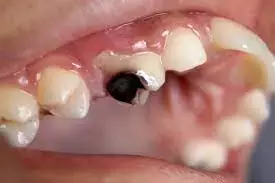- Home
- Medical news & Guidelines
- Anesthesiology
- Cardiology and CTVS
- Critical Care
- Dentistry
- Dermatology
- Diabetes and Endocrinology
- ENT
- Gastroenterology
- Medicine
- Nephrology
- Neurology
- Obstretics-Gynaecology
- Oncology
- Ophthalmology
- Orthopaedics
- Pediatrics-Neonatology
- Psychiatry
- Pulmonology
- Radiology
- Surgery
- Urology
- Laboratory Medicine
- Diet
- Nursing
- Paramedical
- Physiotherapy
- Health news
- Fact Check
- Bone Health Fact Check
- Brain Health Fact Check
- Cancer Related Fact Check
- Child Care Fact Check
- Dental and oral health fact check
- Diabetes and metabolic health fact check
- Diet and Nutrition Fact Check
- Eye and ENT Care Fact Check
- Fitness fact check
- Gut health fact check
- Heart health fact check
- Kidney health fact check
- Medical education fact check
- Men's health fact check
- Respiratory fact check
- Skin and hair care fact check
- Vaccine and Immunization fact check
- Women's health fact check
- AYUSH
- State News
- Andaman and Nicobar Islands
- Andhra Pradesh
- Arunachal Pradesh
- Assam
- Bihar
- Chandigarh
- Chattisgarh
- Dadra and Nagar Haveli
- Daman and Diu
- Delhi
- Goa
- Gujarat
- Haryana
- Himachal Pradesh
- Jammu & Kashmir
- Jharkhand
- Karnataka
- Kerala
- Ladakh
- Lakshadweep
- Madhya Pradesh
- Maharashtra
- Manipur
- Meghalaya
- Mizoram
- Nagaland
- Odisha
- Puducherry
- Punjab
- Rajasthan
- Sikkim
- Tamil Nadu
- Telangana
- Tripura
- Uttar Pradesh
- Uttrakhand
- West Bengal
- Medical Education
- Industry
Non-fluoride Caries Preventive Agents: ADA guidelines

A panel of experts convened by the ADA Council on Scientific Affairs suggested that certain non-fluoride agents may provide some benefit as adjunctive therapies in children and adults at higher risk of developing either root or coronal caries.
As part of the evidence-based approach to care, these clinical recommendations should be integrated with the practitioner's professional judgment and the patient's needs and preferences.
In this article, the authors present evidence-based clinical recommendations regarding the use of non-fluoride caries-preventive agents. The recommendations were developed by an expert panel convened by the American Dental Association (ADA) Council on Scientific Affairs. The panel addressed several questions regarding the efficacy of non-fluoride agents in reducing the incidence of caries and arresting or reversing the progression of caries.
Types of Studies Reviewed
In collaboration with the ADA Division of Science staff, a panel of experts convened by the ADA Council on Scientific Affairs conducted a MEDLINE search to identify all randomized and nonrandomized clinical studies regarding the use of non-fluoride caries-preventive agents.
Results
The panel reviewed evidence from 50 randomized controlled trials and 15 nonrandomized studies to assess the efficacy of various non-fluoride caries-preventive agents.
Recommendations:
- In children aged 5 to 16 years, supervised consumption of chewing gum sweetened with sucrose-free polyol (xylitol only or polyol combinations) for 10 to 20 minutes after meals marginally reduces the incidence of caries.
- In children reporting caries experience, consumption of xylitol-containing lozenges or hard candy reduces the incidence of coronal caries.
- In children aged 4 to 18 years, professionally applied 10 to 40 percent chlorhexidine varnish does not reduce the incidence of caries.
- In children up to 15 years, the application of a 1:1 mixture of chlorhexidine-thymol varnish does not reduce the incidence of caries.
- In adults and elderly people, the application of a 1:1 mixture of chlorhexidine-thymol varnish reduces the incidence of root caries.
- In children and adults, the use of 0.05 to 0.12 per cent chlorhexidine rinse does not reduce the incidence of coronal caries
- In adults and elderly people, the use of 0.12 percent chlorhexidine rinse does not reduce the incidence of root caries.
Clinical Implications
The panel concluded that certain non-fluoride agents might provide some benefit as adjunctive therapies in children and adults at higher risk of developing caries. These recommendations are presented as a resource for dentists to consider in the clinical decision-making process. As part of the evidence-based approach to care, these clinical recommendations should be integrated with the practitioner& apos;s professional judgment and the patient's needs and preferences.
Reference:
Non fluoride caries-preventive agents: Executive summary of evidence-based clinical recommendations by Michael P. Rethman et al. published in The Journal of the American Dental Association
DOI: https://doi.org/10.14219/jada.archive.2011.0329
Dr. Shravani Dali has completed her BDS from Pravara institute of medical sciences, loni. Following which she extensively worked in the healthcare sector for 2+ years. She has been actively involved in writing blogs in field of health and wellness. Currently she is pursuing her Masters of public health-health administration from Tata institute of social sciences. She can be contacted at editorial@medicaldialogues.in.
Dr Kamal Kant Kohli-MBBS, DTCD- a chest specialist with more than 30 years of practice and a flair for writing clinical articles, Dr Kamal Kant Kohli joined Medical Dialogues as a Chief Editor of Medical News. Besides writing articles, as an editor, he proofreads and verifies all the medical content published on Medical Dialogues including those coming from journals, studies,medical conferences,guidelines etc. Email: drkohli@medicaldialogues.in. Contact no. 011-43720751


